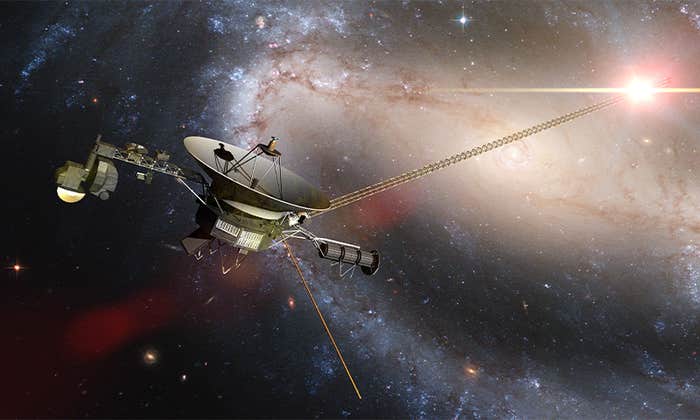More than a decade ago a skinny-legged knee-less robot named Ranger completed an ultramarathon on foot. Donning a fetching red baseball cap with “Cornell” stitched on the front, and striding along at a leisurely pace, Ranger walked 40.5 miles, or 65 kilometers, on a single battery charge.
Ranger broke a record that day, walking farther than any robot before it—and that record remains unbeaten among robots. But Ranger’s pace was surprisingly pokey: It took 30 hours and 49 minutes to cover the distance, equivalent to a mile every 45 minutes. By comparison, the average human can walk at a speed of about 3 miles per hour, and marathon runners average a mile every 10 to 12 minutes.
It turns out that building robots that can walk and run as speedily and fluidly as humans and other animals, over both short and long distances, is extraordinarily complex. Even though the physical materials used in the construction of robots are often more resilient and powerful on a part-by-part comparison, the coordination of the parts seems to matter more for speed and agility. That’s where biological creatures have a leg up, according to new research led by Samuel Burden, robotics professor at the University of Washington.
When each subsystem was considered in isolation, robots, with very few exceptions, outperformed animals.
To answer the question “Why do animals outrun robots?” Burden and his team decided to break down running into its major component systems and then compare the biological version to the engineered. They took this approach rather than compare specific robots to individual animal species because “we didn’t want to tear down any particular robot,” says Burden. This way, they reasoned, the comparison would also be at its purest, since no robot or animal is designed exclusively for running, per se.
The component systems the research team considered included power, frame (for animals both vertebrate skeletons and the exoskeletons of insects were considered), actuation (how running is put into action, which is mostly through muscle in biological creatures and motors in robots), sensing (how the ground looks and feels underfoot), and control, each of which directly affect a runner’s performance.
Ranger, for example, shines in the power category because among machines it has an impressive record of converting the stored energy in its battery into steps over considerable distance and time. It lags behind, though, when it comes to sensing and control. Ranger walked the ultramarathon across a perfectly manicured athletics track, where even the slightest anomaly in the terrain would have tripped up its progress.
The robots that perform best in the control category are those equipped with neuromorphic silicon chips, designed to mimic the wiring of an animal brain, the researchers found. Instead of using a binary system of zeros and ones to transmit digitized information, neuromorphic chips use analog signals spiked along an artificial neural network. The network has junctions that mirror the design of synapses in animal brains. The Tianjic chip, for example, which simulates the architecture of 40,000 neurons wired together, is used to control a robotic bicycle, which expertly maneuvers around obstacles. In principle it could be used to outfit a robot runner, too.
Paradoxically, the researchers’ analysis showed that when each subsystem was considered in isolation, robots, with very few exceptions, outperformed animals. Bones and biological exoskeletons are weaker than the steel, aluminum, and carbon fiber materials that tend to make up a robot’s frame, and even though fat is a richer source of power than the best battery, a robot powered by gasoline would always outlast an animal given unconstrained access to a refueling station. The control category was an exception, as animal brains predictably outclass silicon chips on the sheer magnitude of neurons they contain. But it’s not clear that a higher number of neurons alone can dictate a robot or animals’ agility in movement.
So why, on the whole, haven’t we been able to design robots that run as well as, or better than, animals yet? It’s not an idle, purely philosophical question: “There are many circumstances where it would be very valuable if our robots were better, comparable, ideally exceeding the performance [of animals],” says Burden. “For example, we could make better assistive devices like exoskeletons or prosthetics.”
According to Burden, engineers have spent too much time focusing on the component parts of their robots, missing the emergent properties of the whole. “Rather than focusing on the latest, newest, fanciest, most expensive component that’s going to make my robot better, maybe we could take a step back and think more carefully about the parts we have, and do better with those,” says Burden. “One way to interpret that is we need new metrics that are quantifying either whole system or more tightly integrated subsystems.”
As Burden and his colleagues note in their paper, animals have lived through up to 10 million times more generations than robots. In terms of individual experience, animals also tend to have longer lifespans than robots and may take roughly 10,000 steps a day over the decades that they live. They have had a lot more time to figure out how to run and to walk.
So, evolution may have given humans a head start, but in Burden’s view robotics stands a chance at catching up. “It’s not an undirected search, the way that it is with evolution” he says. Engineers are masters of optimization; they simply haven’t figured out exactly which properties they need to optimize, yet. ![]()
Lead image: ProStockStudio / Shutterstock























